




- BRNN
- BRI News
- BRNN News
- Database
Official Documents Polices and Regulations
Inter-government Documents International Cooperation BRI Countries
Business Guide Economic Data BRI Data
Trade
Investment Projects Latest projects
Cases - Content Pool
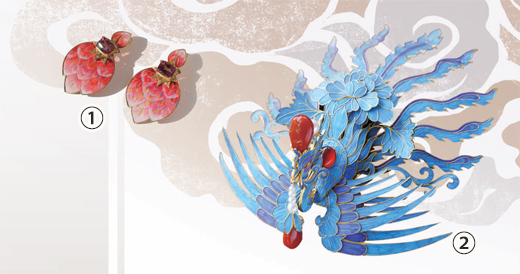
①: Photo shows eardrops crafted with dyed goose feathers and parrot plumes. (Photo courtesy of Wang Shenglin)
②: Photo shows a phoenix hairpin adorned with parrot feathers and other materials. (Photo courtesy of Wang Shenglin)
Wang Shenglin, a post-90s jewelry designer, regularly showcases his handcrafted accessories on social media platforms.
His creations include pieces with traditional themes like crowns inlaid with kingfisher feathers, silver-gilt filigree hairpins decorated with peonies, and replicas of hairpins decorated with butterflies from the Palace Museum collection, as well as newly designed brooches with iris decorations and butterfly-shaped earrings.
Each new release typically garners enthusiastic comments like "absolutely gorgeous" and "so graceful," with many followers leaving messages to buy in the comment sections.
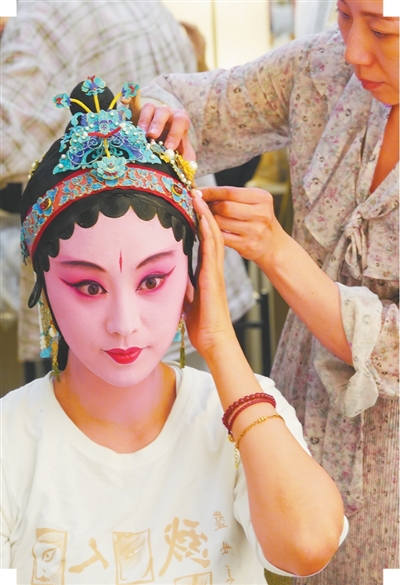
A Kunqu opera performer wears a headdress made with kingfisher feather art. (Photo courtesy of Wang Shenglin)
Fueled by young people's passion for traditional culture, new Chinese-style fashion has seen a surge in popularity.
Chinese-style accessories that combine traditional cultural elements with modern design concepts and employ time-honored craftsmanship techniques have become a beloved choice among many consumers.
Accessories inspired by a delicate empress crown from the Ming dynasty (1368-1644), a treasured piece held in the National Museum of China, have captivated many young people. The empress crown exemplifies the fusion of techniques such as filigree, kingfisher feather art, and inlay.
The aesthetic beauty, cultural richness and profound meaning embodied in traditional craftsmanship showcase the magnificence of China's fine traditional culture, striking a chord in the hearts of young people.
Wang, for instance, began learning kingfisher feather art in 2008 and has been devoted to this craft for nearly two decades.
Meanwhile, Lyu Jikai, a post-90s craftsman in east China's Shandong Province, became fascinated by filigree inlay art and spent a year crafting a replica of a phoenix crown from the Qing Dynasty (1644-1911).
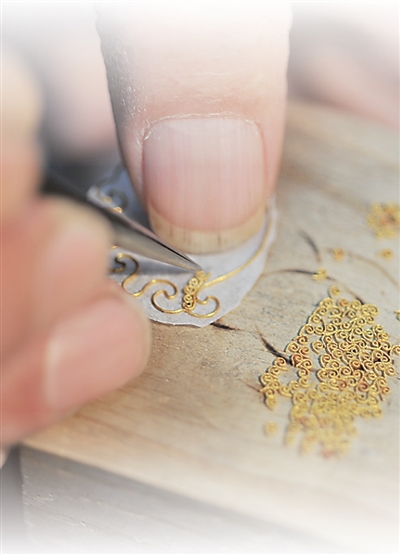
Photo shows a step of filigree art. (Photo courtesy of Pan Miao)
In night schools for young adults, traditional handicraft classes attract enthusiastic learners who focus intently and patiently on mastering techniques like enamel and cloisonné techniques and the art of making ronghua, or velvet flowers.
Upholding tradition while embracing innovation has enabled traditional crafts to resonate with the pulse of the times.
"No craft remains the same forever," said Wang, whose designs combine classical elegance with modern flair, incorporating techniques such as gemstone setting, 3D printing, and Western jewelry craftsmanship.
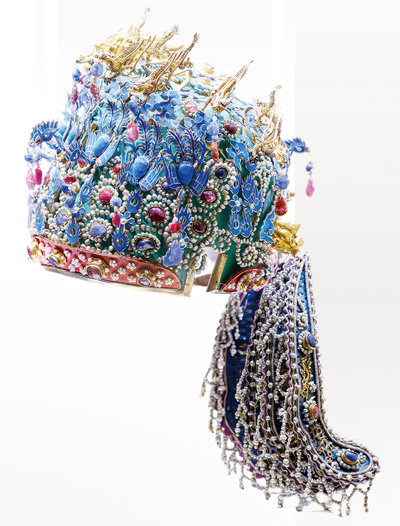
Photo shows a delicate empress crown from the Ming dynasty (1368-1644), a treasured piece held in the National Museum of China. (Photo/Hu Zhichao)
"We need not only skilled craftspeople to preserve traditional techniques but also designers who bring in modern aesthetics," Wang said.
He hopes to make breakthroughs in both materials and craftsmanship to create accessories that align with contemporary tastes and aesthetic preferences, and bring the traditional kingfisher feather art into more people's daily lives.

Photo shows a gold openwork phoenix-pattern eardrop from the Ming dynasty (1368-1644) held in the Hubei Provincial Museum, central China's Hubei Province. (Photo courtesy of Lu Li)
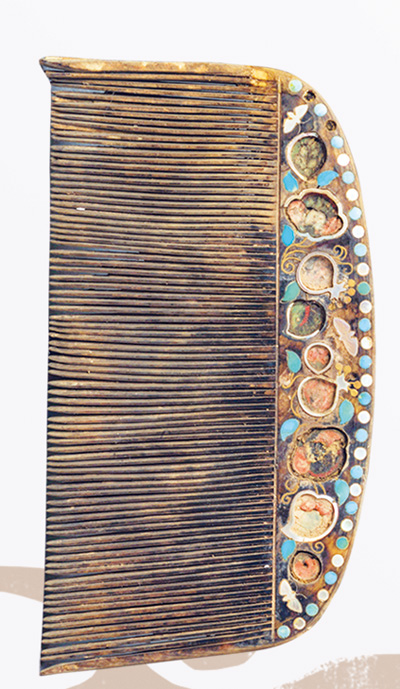
A bone comb inlaid with mother-of-pearl and turquoise from the Tang Dynasty (618-907) housed in the Wuwei Museum, northwest China's Gansu Province. (Photo/Hou Yadan)

Photo shows gold bracelets inset with gemstones from the Ming dynasty (1368-1644) held in the Hubei Provincial Museum, central China's Hubei Province. (Photo courtesy of Lu Li)

Photo shows a velvet flower displayed at the Intangible Cultural Heritage Hall of the Nanjing Museum, east China's Jiangsu Province. (Photo/Chen Xiaorong)

Tel:86-10-65363107, 86-10-65368220, 86-10-65363106